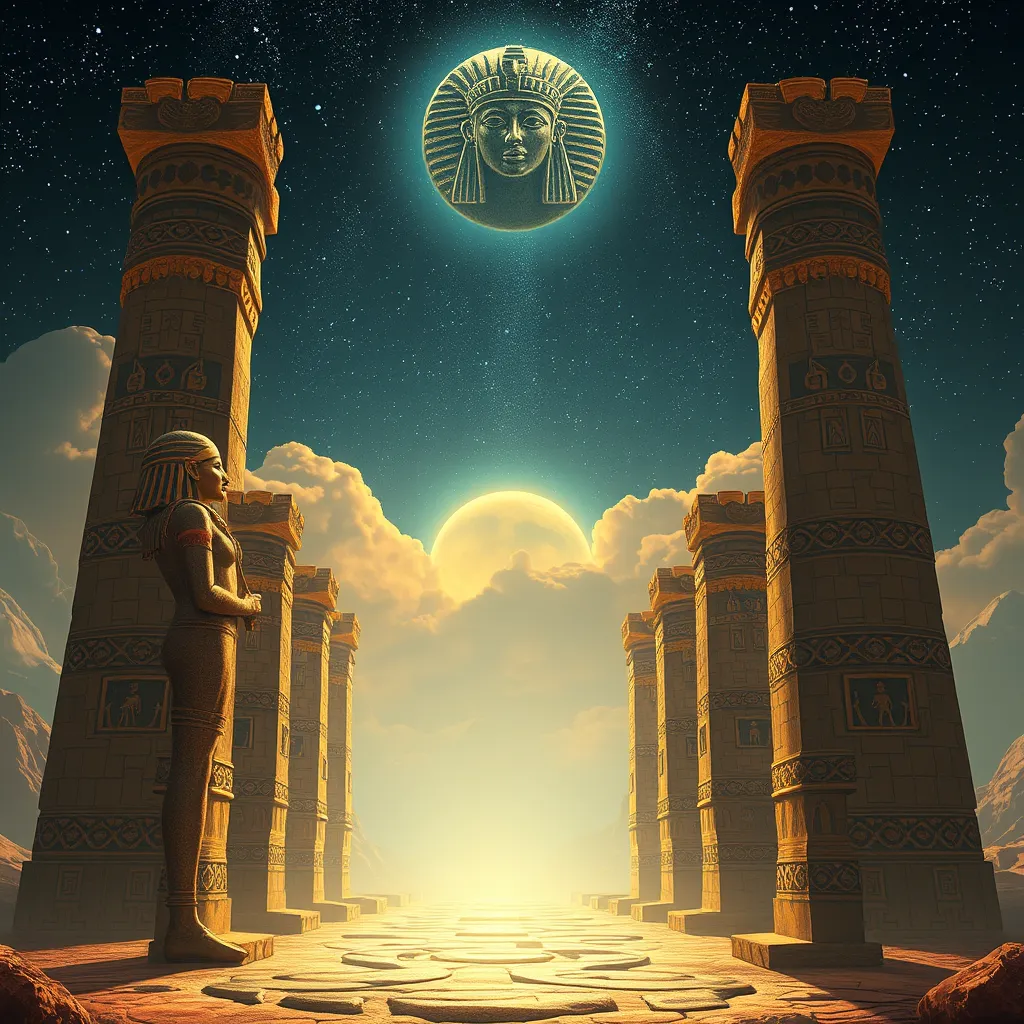Discover the Duat: Explore the Egyptian Afterlife
I. Introduction to the Duat
The Duat, in ancient Egyptian belief, refers to the realm of the dead and the afterlife. It is not merely a destination but a complex and multifaceted space where the souls of the deceased journey through various challenges and rewards. The significance of the afterlife in Egyptian culture cannot be overstated; it was a fundamental aspect of their belief system, shaping their rituals, art, and daily life.
This article will explore the concept of the Duat, its significance in mythology, the journey of the soul, the landscapes within, and the enduring influence it has had on ancient and modern cultures.
II. The Significance of the Duat in Egyptian Mythology
The Duat plays a crucial role in the journey of the soul after death. It is believed that upon dying, the soul would enter the Duat, facing various trials before reaching its final destination.
Key deities associated with the Duat include:
- Osiris: The god of the afterlife, resurrection, and the judge of the dead.
- Anubis: The god who oversees the mummification process and guides souls through the Duat.
- Ma’at: The goddess of truth and justice, whose feather is used in the judgment of souls.
The symbolism of the Duat is rich and complex, representing both fear and hope. It embodies the idea of transformation and the belief that death is not an end but a transition to a different state of existence.
III. The Journey Through the Duat
The journey through the Duat begins with the moment of death. The deceased would face a series of challenges that tested their worthiness. One of the most significant challenges was the judgment before Osiris, where the heart of the deceased was weighed against the feather of Ma’at.
Key challenges faced by the deceased include:
- Confronting monstrous beings known as the “Ammut,” who would devour the unworthy.
- Navigating through dark passages and treacherous landscapes.
- Facing trials that tested one’s virtues and deeds during life.
The Book of the Dead served as a vital guide for souls navigating the Duat. This collection of spells and prayers was intended to assist the deceased in overcoming obstacles and ensuring a safe passage to the afterlife.
IV. The Landscape of the Duat
The Duat is depicted as a vast and varied landscape, filled with different realms that the soul must traverse. Each realm has its own characteristics and significance.
Some notable features of the Duat include:
- Rivers: Often depicted as flowing with water or fire, representing both danger and purification.
- Caves and Mountains: Symbolizing obstacles and the unknown, these areas are often filled with challenges.
- Fields of Iaru: A paradise for the blessed souls, where they could enjoy eternal peace and abundance.
Artwork and inscriptions found in tombs frequently depict the Duat, illustrating the journey and challenges faced by the deceased, as well as the deities who guide them.
V. The Weighing of the Heart Ceremony
The Weighing of the Heart ceremony is one of the most crucial aspects of the Duat experience. It symbolizes the judgment of the soul and determines its fate in the afterlife.
During this ceremony:
- The heart of the deceased is placed on one side of a scale.
- The feather of Ma’at is placed on the other side.
- If the heart is lighter than or equal to the feather, the soul is deemed worthy and can continue to the afterlife.
The consequences of judgment are dire for the unworthy. If the heart is heavier, it is devoured by Ammut, leading to annihilation and a second death.
VI. Life in the Duat: Rewards and Challenges
For the souls that pass the judgment, the Duat offers both rewards and challenges. Those deemed worthy are granted eternal life and bliss, often depicted as living in harmony with the gods.
Rewards for the worthy include:
- Living in the Fields of Iaru, a paradise filled with plenty.
- Reuniting with ancestors and loved ones in eternal peace.
- Engaging in activities they enjoyed during life, free from sorrow.
Conversely, the unworthy face severe punishments, including:
- Annihilation, which represents the ultimate fear of non-existence.
- Torment in the Duat, where they might encounter the monsters or face endless challenges.
The concept of rebirth and renewal is also present in the Duat, symbolizing the cyclical nature of life, death, and resurrection.
VII. Influence of the Duat on Ancient Egyptian Culture
The Duat significantly influenced ancient Egyptian culture, shaping their burial practices and tomb architecture. Tombs were designed to ensure a safe passage through the Duat, often filled with items for use in the afterlife.
The role of the Duat extends into literature and art, with many texts and images depicting the journey through the afterlife, the gods of the Duat, and the rewards awaiting the worthy.
In modern times, the Duat continues to capture the imagination of scholars and enthusiasts, inspiring interpretations in literature, film, and art, reflecting a legacy that endures through centuries.
VIII. Conclusion
In summary, the Duat is a profound aspect of ancient Egyptian belief, representing a complex journey through the afterlife filled with challenges, judgments, and possibilities for eternal life. Its significance is reflected in the culture, rituals, and artistic expressions of ancient Egyptians.
The legacy of the Duat invites contemporary audiences to explore and reflect on ancient Egyptian beliefs and practices, offering insights into how they viewed life, death, and the beyond. The exploration of the Duat remains a captivating journey, encouraging further inquiry into the mysteries of the ancient world.




